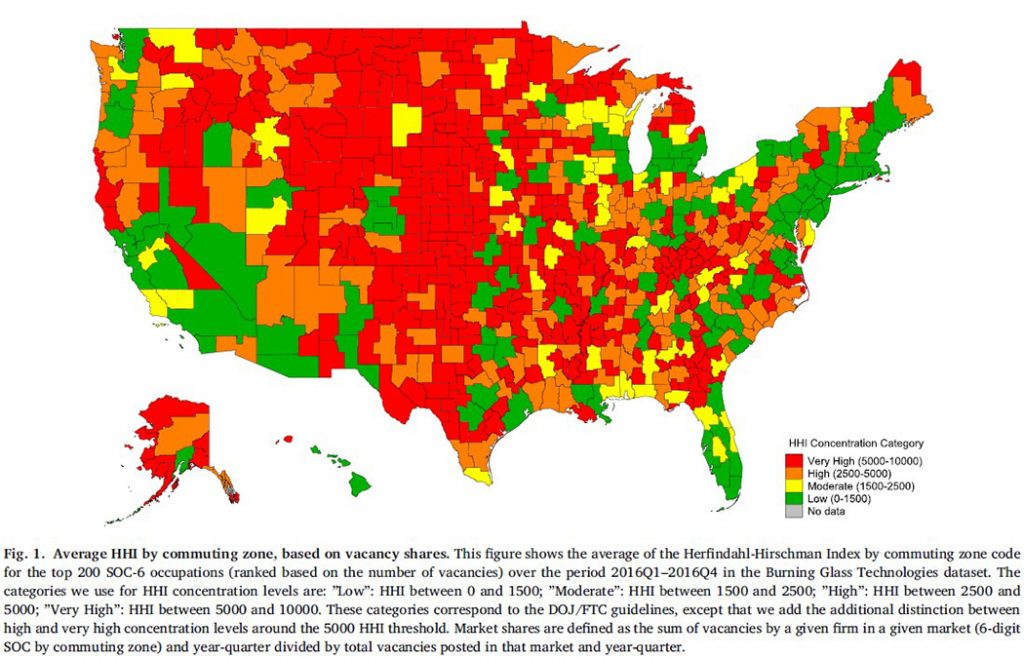Why Are Wages So Low In So Many Markets?
By IESE Insight
Giant companies, like Amazon and Walmart, may boast that they create jobs wherever they go. But what happens in a local labor market when relatively few employers hold most of the hiring power? Evidence suggests that wages are suppressed, a correlation seen across skill levels. Employees are left with less bargaining power.
This power dynamic is writ large in award-winning research by José Azar et al. “Concentration in U.S. labor markets: Evidence from online vacancy data” has been awarded the 2021 “EALE Labour Economics Prize” for being the best paper published in Labour Economics during the previous year.
Using data from Burning Glass Technologies — a company which collects online job postings from about 40,000 websites, “the near-universe of online U.S. job vacancies” — the paper’s coauthors paint an eye-opening picture of labor market concentration, as seen in the map below.
What’s all that red in the map? Power imbalances, in short. Azar and coauthors find that 60% of U.S. labor markets have “high labor market concentrations” as defined using the “Herfindahl-Hirschman Index” (HHI), which is the most common measure of market concentration. That is to say, most areas have relatively few employers. In fact, the average HHI nationwide implies that just 2.3 firms, on average, are recruiting. And, what’s more, “labor market concentration is negatively correlated with wages” across skill levels or the occupational job hierarchy.
Why are better wages found in the big cities?
At the same time, the coauthors find lower market concentrations in more populated areas. Seen another way, just 16% of Americans work in highly concentrated markets. For big city dwellers, there tend to be more employment choices, which help even out the power imbalances seen in more rural areas. “This suggests a new explanation for the city-wage premium,” beyond just the cost of living and talent pool, the coauthors note. And while this paper doesn’t delve into the wage-dynamic details, more can be seen in another paper co-authored by Azar, “Labor market concentration,” forthcoming in the Journal of Human Resources. See: “Why wages stagnate in areas with few employers.”
Methodology, very briefly
Using job-vacancy data collected by Burning Glass Technologies from 40,000 websites in 2016 (the latest complete year available at the time), labor market concentration is calculated using the Herfindahl-Hirschman index (HHI) for each commuting zone in the U.S. by occupation to make three novel contributions regarding labor economics. Read more: https://doi.org/10.1016/j.labeco.2020.101886.
José Azar gratefully acknowledges the financial support of Secretaria d’Universitats I Recerca del Departament d’Empresa I Coneixement de la Generalitat de Catalunya (Ref.2016 BP00358).


